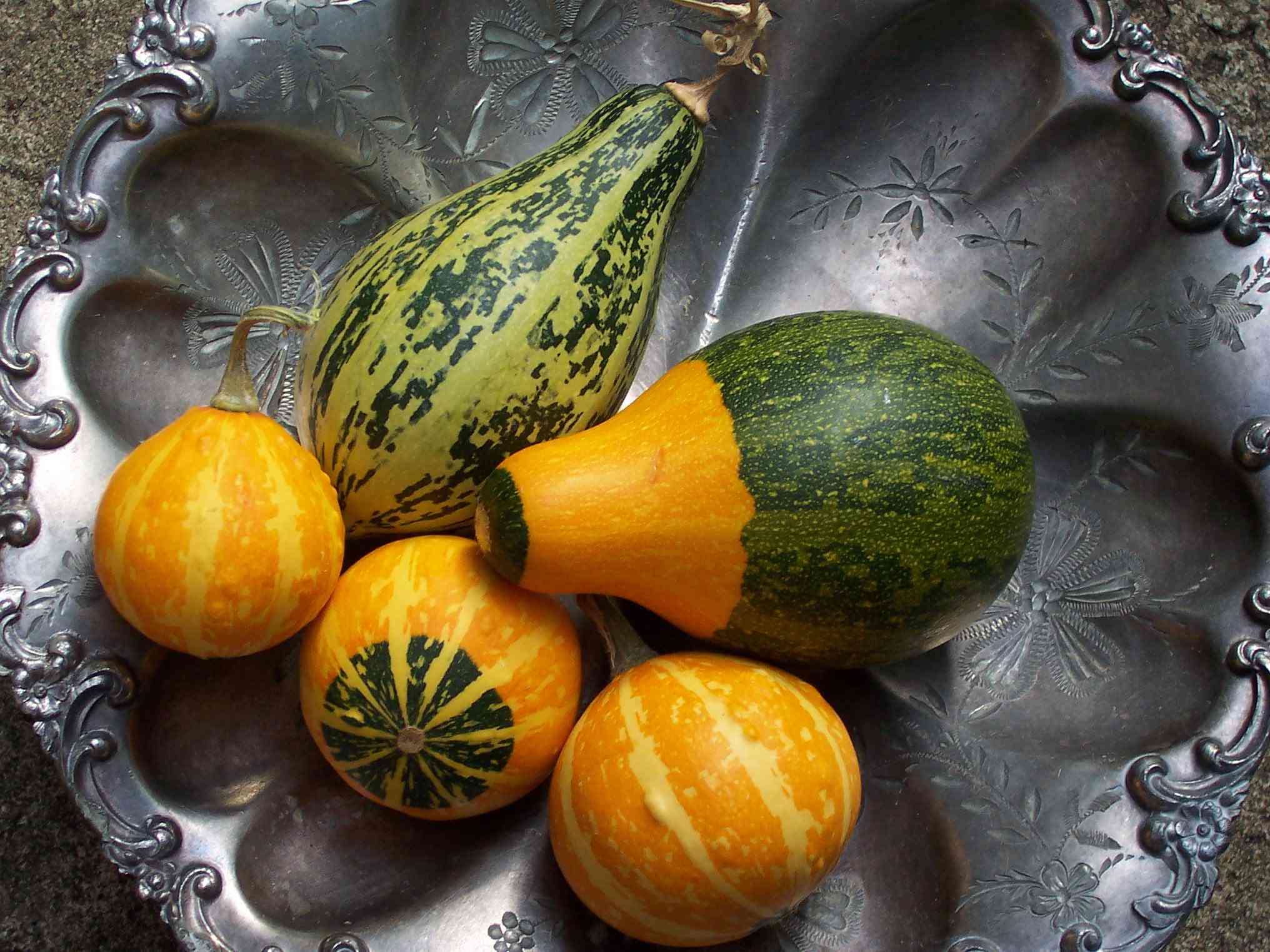Gourds: Swiss army knife of the plant world

COLUMBIA, Mo. — Our ancestors couldn’t go to the hardware store or shopping mall to buy utensils and other household essentials. Instead, they improvised with items found in nature.
The dried fruit of several members of the cucumber family proved useful for many purposes, said University of Missouri Extension horticulturist David Trinklein.
We call these plants gourds, and they may be among the first domesticated plant species, dating back as early as 13,000 B.C.
Members of the genus Lagenaria produce white flowers that open at night and have soft, delicate foliage. Most bear fruit that have thick, hard shells when dried. This makes them useful for items such as ladles, dippers, spoons and containers. Native Americans made gourds into birdhouses to attract purple martins, which helped with insect control.
The fibrous interior of gourds from the genus Luffa has been used for items as diverse as oil filters, life preservers, scrubbing sponges (called “luffas” or “loofahs”), hats and upholstery.
Most of the colorful gourds people use for autumn decoration belong to the genus Cucurbita. They are close relatives of pumpkin. Members of this genus produce yellow flowers that open during the day and have coarser foliage than the white-flowered types. Examples include the pear, egg, orange, spoon, bicolor and warty gourds.
Like most curcubits, gourds are a warm-season crop. Outdoor planting should be delayed until danger of frost has passed, and soil and air temperatures have warmed. Gourd seeds may rot before germinating if planted in cold, wet soils. For those varieties that take a long time to mature, starting seeds indoors can help to assure success of the crop.
Gourds prefer a sunny, well-drained site. The soil should be enriched with organic matter, such as compost, composted manure or peat moss, and prepared thoroughly. It is best to base fertilizer applications on soil test results. However, a general recommendation is to apply 2-3 pounds of fertilizer with a 1:2:2 ratio (e.g. 5-10-10) per 100 square feet of garden area.
When planting gourds, space seeds or transplants 2 feet apart in rows separated by 5 feet. Alternatively, gourds can be planted in hills 4 feet apart in rows separated by 7 feet. If the hill method is used, thin to two plants per hill. Gourds produce vigorous vines that adapt well to a trellis, fence or other type of support. Trellising helps to prevent fruit from forming areas of discoloration that can occur if allowed to come in contact with the ground.
By late summer, gourds should be growing rapidly and require adequate water to encourage vigorous growth. Weed control is important since they compete for water and soil nutrients. Gourds have relatively shallow root systems.
Cucumber beetles can become troublesome pests on gourds. They serve as a primary vector for bacterial wilt, which can quickly kill vines. Additionally, when they feed on the surface of developing fruit, they cause discolored, brown areas to form, rendering the gourd unattractive.
Harvest small ornamental gourds as soon as rinds mature and harden. Cut them from the main vine, allowing a small portion of the stem to remain attached. Fresh gourds need to cure for several weeks in a warm, dry area with good air circulation. After curing, dip or coat them with a household disinfectant to prevent storage diseases. A light coat of wax also protects them from disease and gives them an attractive sheen.
Leave the hard-shelled gourds on the vines until vines die or freeze in late fall. “Freezing will not harm mature gourds but will cause immature ones to collapse,” said Trinklein in a press release. “Immature gourds are of or little value, since they do not cure well.”
Store hard-shelled gourds in a warm, dry area to cure. For most types, curing takes about four months. Curing is finished when the seeds inside the gourd rattle when shaken. The gourd can then be sanded, sawed, painted or polished or have whatever is necessary done to them to make them into useful or decorative items.
“For adventuresome gardeners, saving seeds from gourds can be interesting,” said Trinklein. Cucurbits freely cross-pollinate, so seeds saved from gourds grown in the garden will likely produce fruit of different shapes, sizes and colors. “More likely than not, very few of the offspring will resemble the fruit from which the seed was saved.”
Gourd trivia
- In the early 1800s, gourds were used as currency for a time in Haiti. Even today, Haiti’s basic unit of currency is called the gourde.
- The papery, winged seed of the climbing gourd has a wingspan 5 five inches. It reportedly inspired the design of early aircraft and gliders.
- According to Guinness World Records, the world’s longest gourd grew in China in 2008. It measured an astonishing 14 feet, 11 inches.
- East Africans often give gourds with picture stories carved on them as wedding gifts.
- Ricky Ricardo’s bongo drum in the television sitcom “I Love Lucy” was made from a zucca gourd. The zucca gourd frequently grows to 50 pounds or more.
Miss Clipping Out Stories to Save for Later?
Click the Purchase Story button below to order a print of this story. We will print it for you on matte photo paper to keep forever.

